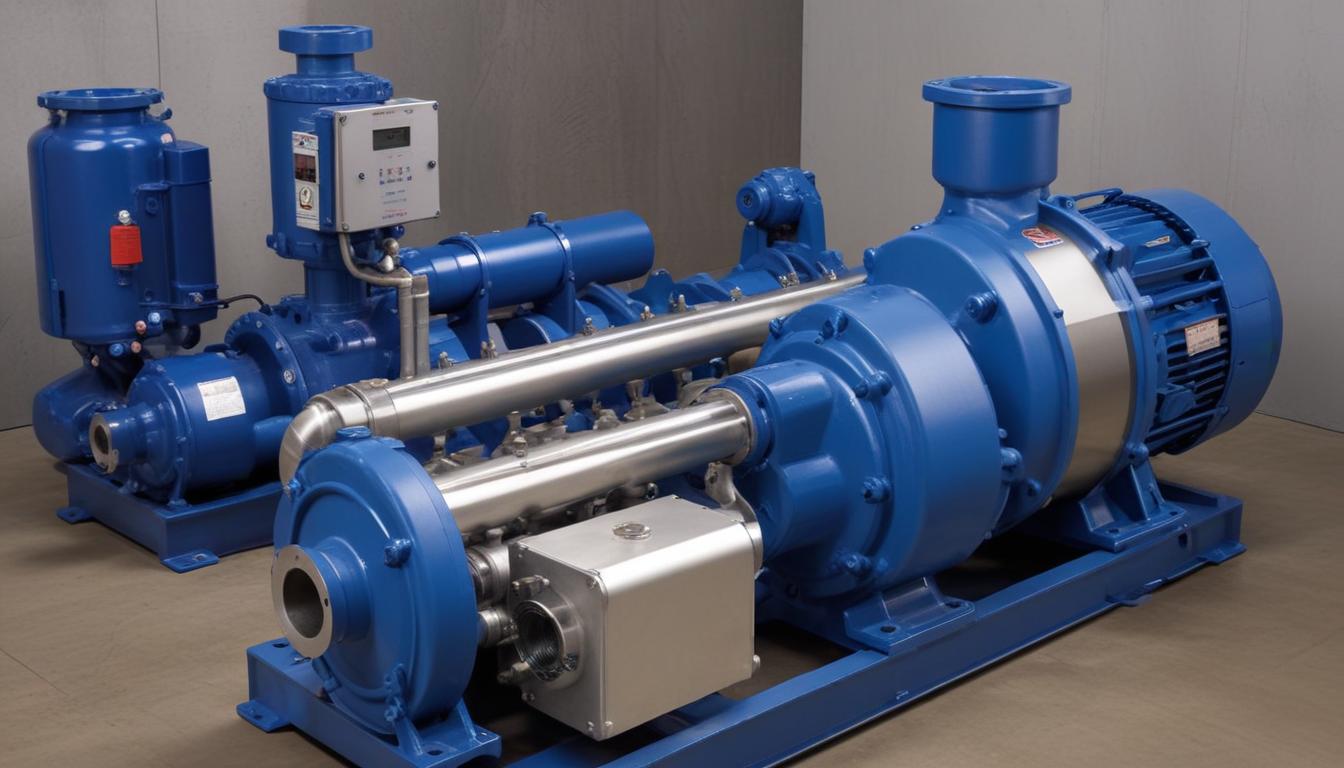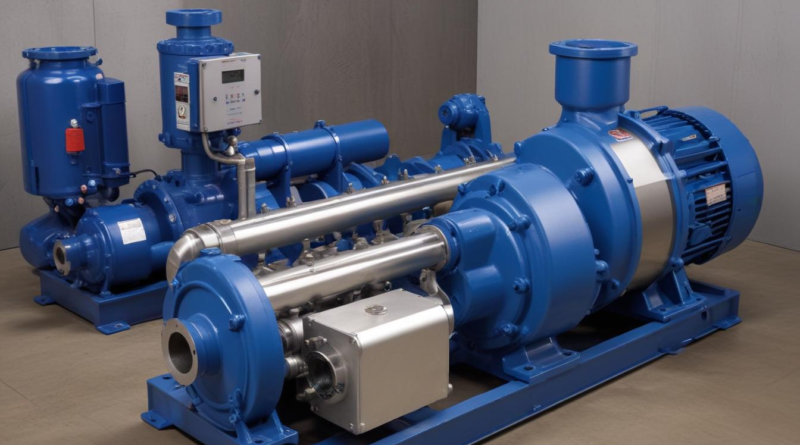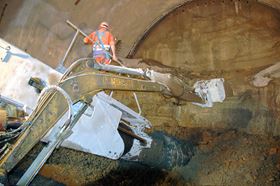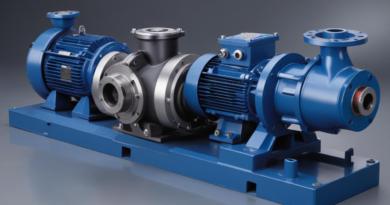how to select a pump for high-flow applications
Accurately determining flow requirements is essential for the effective selection of high-flow pumps. This process begins with quantifying the flow rate, typically measured in gallons per minute (GPM) or liters per second (L/s), required to meet the system’s demands. Understanding both the average and peak flow rates ensures that the pump can handle normal operations as well as unexpected surges without compromising performance.
Additionally, evaluating the total dynamic head (TDH) is crucial. TDH encompasses the vertical lift, friction losses, and any other resistance the fluid encounters within the system. The calculation for TDH can be broken down as follows:
- Static Head: The vertical distance the fluid must be lifted.
- Friction Losses: Resistance caused by the fluid moving through pipes, valves, and fittings.
- Pressure Requirements: The necessary pressure to overcome system resistance.
A clear understanding of these components aids in selecting a pump that can deliver the required flow rate against the system’s resistance. Moreover, the types of fluids being pumped should be considered, as viscosity and temperature can significantly impact pump performance. For instance:
| Fluid Property | Impact on Pump Selection |
|---|---|
| Viscosity | Affects the pump’s ability to handle thick or thin fluids, influencing the type of pump chosen. |
| Temperature | High temperatures may require materials that can withstand thermal stress. |
| Corrosiveness | Determines the materials used in pump construction to prevent degradation. |
In addition to these factors, assessing the system’s layout and any potential obstructions or constraints is vital. Properly mapping out the entire fluid path helps identify any challenges that might affect flow rates and overall pump performance. By meticulously analyzing these aspects, one can ensure the chosen high-flow pump aligns perfectly with the system’s requirements, ensuring efficiency and reliability.
types of high-flow pumps
There are several types of high-flow pumps available, each designed to meet specific application requirements. Understanding these distinct categories is essential for making an informed selection that aligns with your system’s demands.
Centrifugal Pumps are among the most widely used high-flow pumps. They operate by converting rotational energy from an impeller into kinetic energy in the fluid, effectively increasing the fluid’s velocity and pressure. These pumps are ideal for applications requiring continuous flow and are commonly used in water supply systems, irrigation, and various industrial processes due to their simplicity, reliability, and cost-effectiveness.
Axial-Flow Pumps move fluid parallel to the pump shaft, making them highly efficient for applications that demand very high flow rates with relatively low pressure increases. They are typically employed in large-scale operations such as flood control, cooling water circulation in power plants, and wastewater treatment facilities. Their ability to handle large volumes makes them suitable for environments where space and energy efficiency are critical.
Positive Displacement Pumps, including gear pumps and piston pumps, deliver fluid by trapping a fixed amount and forcing it through the pump. While traditionally associated with precise flow control and higher pressure applications, certain designs can accommodate high-flow requirements. These pumps are advantageous in scenarios where consistent flow rates and the ability to handle viscous fluids are necessary, such as in hydraulic systems and certain chemical processing operations.
Jet Pumps utilize a jet of fluid to create a vacuum, drawing in the main fluid flow. They are often chosen for their simplicity and reliability, especially in applications like shallow well pumping and sump systems. Jet pumps are advantageous in environments where ease of maintenance and straightforward installation are prioritized.
The following table provides a summary of the key characteristics of different high-flow pump types:
| Type of Pump | Flow Rate | Pressure Range | Typical Applications | Advantages |
|---|---|---|---|---|
| Centrifugal | High | Low to Medium | Irrigation, Water Supply, Industrial Processes | Simple design, easy maintenance, cost-effective |
| Axial-Flow | Very High | Low | Flood Control, Large Cooling Systems, Wastewater Treatment | High efficiency at high flow rates, compact design |
| Positive Displacement | Variable | Medium to High | Hydraulic Systems, Chemical Processing, HVAC | Precise flow control, handles viscous fluids well |
| Jet | High | Low | Shallow Wells, Sump Pumps | Simple operation, low maintenance, reliable |
Additionally, specialized high-flow pumps such as Submersible Pumps and Magnetic Drive Pumps cater to niche applications. Submersible pumps are designed to operate underwater, making them suitable for deep well applications and underwater construction. Magnetic drive pumps, which use a magnetic coupling to transfer torque, offer leak-free operation, making them ideal for handling hazardous or corrosive fluids.
When evaluating the types of high-flow pumps, it is crucial to consider the specific requirements of your application, including flow rate, pressure, fluid characteristics, and environmental conditions. By thoroughly understanding the available pump types and their respective advantages, you can make a more informed selection that ensures optimal performance and longevity of your pumping system.
performance characteristics to consider
When selecting high-flow pumps, several performance characteristics must be meticulously evaluated to ensure optimal operation and longevity. Key factors include:
- Flow Rate: The volume of fluid the pump can handle, typically measured in gallons per minute (GPM) or liters per second (L/s). It is crucial to match the pump’s flow rate with the system’s requirements to prevent underperformance or excessive energy consumption.
- Head: Refers to the height the pump can raise the fluid, encompassing both static head and dynamic head. Understanding the total head ensures the pump can overcome system resistance and deliver the desired flow rate.
- Efficiency: Indicates how effectively the pump converts electrical or mechanical energy into fluid movement. Higher efficiency reduces operational costs and minimizes energy wastage.
- Net Positive Suction Head (NPSH): Represents the pressure available at the pump inlet to prevent cavitation. Adequate NPSH is essential for maintaining pump performance and avoiding damage to pump components.
- Power Requirements: The electrical or mechanical power needed to operate the pump. Properly matching power supply with pump requirements ensures reliable performance and prevents overloading.
- Pump Curve: A graphical representation of the pump’s performance, showing the relationship between flow rate and head. Analyzing the pump curve helps in selecting a pump that operates efficiently within the desired range.
- Operating Range: The range of conditions under which the pump can operate effectively. Pumps with a wider operating range offer greater flexibility and adaptability to varying system demands.
A comprehensive understanding of these characteristics can be facilitated through the following table:
| Performance Characteristic | Description | Importance in Selection |
|---|---|---|
| Flow Rate | Volume of fluid the pump can deliver per unit time. | Ensures the pump meets system demand without overloading. |
| Head | Height the pump can elevate the fluid, including static and dynamic components. | Determines the pump’s ability to overcome system resistance. |
| Efficiency | Ratio of useful power output to total power input. | Impacts energy consumption and operational costs. |
| NPSH | Pressure at the pump inlet to prevent cavitation. | Critical for maintaining pump integrity and performance. |
| Power Requirements | Energy needed to operate the pump. | Ensures compatibility with available power sources. |
| Pump Curve | Graph showing flow rate vs. head. | Helps in selecting a pump that operates efficiently within desired parameters. |
| Operating Range | Variety of conditions under which the pump can function effectively. | Provides flexibility in handling varying system demands. |
Additionally, considering the reliability and durability of the pump under continuous high-flow conditions is paramount. Factors such as wear resistance, material compatibility, and maintenance requirements directly influence the pump’s lifespan and operational costs. Evaluating the noise levels and vibration characteristics may also be important, especially in environments where these factors impact overall system performance or worker comfort.
Furthermore, integrating control features like variable speed drives or automated monitoring systems can enhance the pump’s adaptability and efficiency. These features allow for real-time adjustments based on system demands, leading to improved performance and energy savings.
By thoroughly assessing these performance characteristics, one can make a well-informed selection of high-flow pumps that not only meet the immediate system requirements but also provide long-term reliability and cost-effectiveness.
material and construction factors
 Selecting appropriate materials and construction techniques is crucial in ensuring the longevity and efficiency of high-flow pumps. The choice of materials directly impacts the pump’s ability to handle specific fluids, resist corrosion, and endure operating conditions. When evaluating different pump types, it is essential to consider the compatibility of materials with the fluid being pumped, as well as the environmental factors the pump will encounter.
Selecting appropriate materials and construction techniques is crucial in ensuring the longevity and efficiency of high-flow pumps. The choice of materials directly impacts the pump’s ability to handle specific fluids, resist corrosion, and endure operating conditions. When evaluating different pump types, it is essential to consider the compatibility of materials with the fluid being pumped, as well as the environmental factors the pump will encounter.
Material Selection involves choosing components that can withstand the chemical and physical properties of the fluid. Common materials used in high-flow pumps include:
- Stainless Steel: Known for its excellent corrosion resistance and strength, stainless steel is ideal for handling a wide range of fluids, including those that are corrosive or abrasive.
- Cast Iron: Offers high durability and is cost-effective, making it suitable for abrasive fluids and applications where wear resistance is paramount.
- Bronze: Provides good corrosion resistance and is often used in marine applications or environments with saline fluids.
- Plastics (e.g., PVC, Polyethylene): Lightweight and resistant to many chemicals, plastics are suitable for handling non-abrasive and less corrosive fluids.
- Bronze: Often used in environments where resistance to seawater or other corrosive fluids is required.
The construction factors extend beyond material choice to include the design and manufacturing processes that enhance the pump’s performance and reliability. Key construction considerations include:
- Sealing Mechanisms: Proper seals prevent leaks and ensure efficient operation. Materials used for seals must be compatible with the pumped fluid to avoid degradation.
- Impeller Design: The shape and material of the impeller affect the pump’s efficiency and its ability to handle different flow rates and pressures.
- Bearings and Shafts: High-quality bearings and properly aligned shafts reduce wear and extend the pump’s operational life.
To facilitate the selection process, the following table outlines common materials used in high-flow pump construction along with their key properties and suitable applications:
| Material | Key Properties | Suitable Applications |
|---|---|---|
| Stainless Steel | Corrosion-resistant, strong, durable | Chemical processing, food and beverage, pharmaceuticals |
| Cast Iron | High wear resistance, cost-effective | Abrasive fluid handling, water supply systems |
| Bronze | Excellent saltwater resistance, durable | Marine applications, desalination plants |
| Plastics (PVC, Polyethylene) | Lightweight, chemical-resistant | Non-abrasive fluid pumping, sewage systems |
| Carbon Steel | High strength, good machinability | Oil and gas industries, high-pressure applications |
Construction Techniques also play a vital role in the performance of high-flow pumps. Precision engineering ensures that all components fit seamlessly, reducing the risk of mechanical failures. Additionally, advanced manufacturing processes such as CNC machining and additive manufacturing allow for the production of complex geometries that enhance pump efficiency and reliability.
Furthermore, considering the environmental conditions where the pump will operate is essential. Factors such as temperature variations, exposure to chemicals, and physical stresses must influence both material selection and construction methods. For instance, pumps operating in high-temperature environments may require materials with superior thermal resistance, while those in corrosive settings need robust corrosion-resistant materials.
Incorporating robust quality control measures during the manufacturing process ensures that the pump meets the required specifications and performs reliably under high-flow conditions. Regular testing and adherence to industry standards can significantly enhance the durability and performance of high-flow pumps.
By meticulously evaluating both material and construction factors, one can make an informed selection that not only meets the immediate operational demands but also ensures sustained performance and reduced maintenance costs over the pump’s lifecycle.
installation and maintenance considerations
Proper installation is critical to ensure the optimal performance and longevity of high-flow pumps. It begins with selecting an appropriate location that provides easy access for maintenance and minimizes exposure to environmental hazards. Ensuring that the pump is installed on a stable and level foundation reduces vibrations and prevents misalignment, which can lead to premature wear and inefficiencies. Additionally, aligning the pump correctly with the piping system is essential to avoid undue stress on the pump’s components and to maintain consistent flow rates.
Piping Configuration plays a significant role in the installation process. Utilizing adequately sized pipes and minimizing bends and fittings helps reduce friction losses and maintain the desired flow rate. Incorporating proper sealing mechanisms and using high-quality materials for piping connections prevent leaks and ensure system integrity. It is also important to include isolation valves and pressure gauges at strategic points to facilitate maintenance and monitor system performance effectively.
Electrical Considerations are paramount when installing high-flow pumps. Ensuring that the power supply matches the pump’s voltage and current requirements prevents electrical failures and enhances safety. Implementing appropriate grounding and using surge protectors safeguard the pump against electrical surges and faults. Additionally, integrating control systems, such as variable frequency drives (VFDs), can optimize pump performance by adjusting the motor speed based on real-time demand, leading to energy savings and improved efficiency.
Environmental Protection measures should be taken into account to shield the pump from adverse conditions. Installing weatherproof enclosures or protective barriers can safeguard the pump from moisture, dust, and temperature extremes, thereby extending its operational life. In areas prone to corrosive environments, selecting appropriate materials and coatings during the selection process becomes even more crucial to prevent degradation and ensure reliable performance.
Once installed, regular maintenance is essential to sustain the efficiency and reliability of high-flow pumps. Establishing a comprehensive maintenance schedule helps identify and address potential issues before they escalate into significant problems. Key maintenance activities include:
- Inspection: Regularly inspect the pump and its components for signs of wear, corrosion, or damage. Early detection of issues can prevent costly repairs and downtime.
- Cleaning: Keep the pump and surrounding area free from debris and buildup to ensure unobstructed flow and optimal performance. Cleaning impellers and other internal parts is particularly important in applications handling dirty or abrasive fluids.
- Lubrication: Properly lubricate moving parts, such as bearings and seals, to reduce friction and wear. Using the recommended lubricants as specified by the manufacturer enhances component longevity.
- Replacement of Wear Parts: Timely replacement of consumable parts, such as seals, bearings, and impellers, maintains the pump’s efficiency and prevents unexpected failures.
- Performance Monitoring: Continuously monitor key performance indicators, such as flow rate, pressure, and power consumption. Deviations from normal operating conditions can indicate underlying issues that need attention.
Implementing a preventive maintenance program can significantly reduce the likelihood of unexpected pump failures and extend the overall lifespan of the system. Utilizing maintenance management software or keeping detailed maintenance logs aids in tracking maintenance activities and scheduling future tasks effectively.
The following table outlines a typical maintenance schedule for high-flow pumps:
| Maintenance Task | Frequency | Description |
|---|---|---|
| Visual Inspection | Weekly | Check for leaks, unusual noises, and signs of wear. |
| Lubrication | Monthly | Lubricate bearings and moving parts as per manufacturer’s recommendations. |
| Filter Cleaning/Replacement | Quarterly | Clean or replace filters to ensure unobstructed flow and prevent contamination. |
| Impeller Inspection | Biannually | Inspect impellers for damage or buildup and clean or replace if necessary. |
| Performance Testing | Annually | Conduct comprehensive tests to evaluate flow rate, pressure, and efficiency. |
Documentation and Training are also vital components of effective installation and maintenance. Maintaining detailed records of installation procedures, maintenance activities, and any repairs performed ensures that all relevant information is readily available for future reference. Additionally, providing adequate training for personnel responsible for operating and maintaining the pumps enhances their ability to perform tasks correctly and respond promptly to any issues that may arise.
Incorporating these installation and maintenance considerations during the selection process ensures that high-flow pumps operate efficiently and reliably over their intended lifespan. By prioritizing proper installation techniques and adhering to a structured maintenance regimen, organizations can achieve sustained performance, minimize operational disruptions, and maximize the return on their investment in high-flow pump systems.




